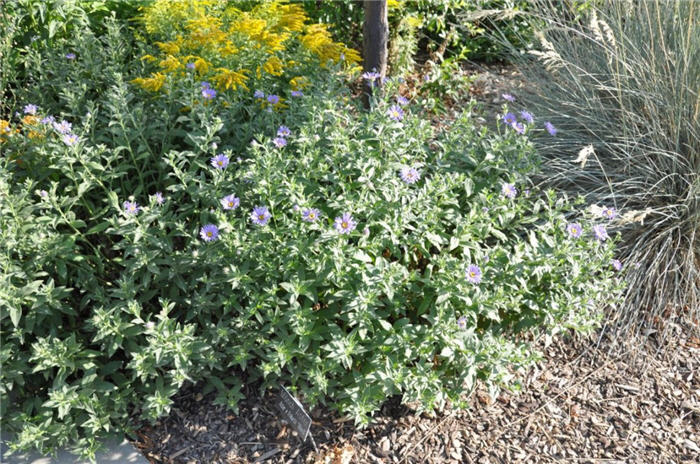| Botanical Name: Aster x frikartii 'Monch' | |
| Common Name: Monch Frikart's Aster |

-
Anatomy
-
Culture
-
Design
Plant Type
Perennial
Height Range
1-3'
Flower Color
Blue, Lavender
Flower Season
Summer, Fall
Leaf Color
Green
Bark Color
n/a
Fruit Color
n/a
Fruit Season
n/a
Sun
Full
Water
Low, Medium
Growth Rate
Moderate
Soil Type
Sandy, Clay, Loam, Rocky, Unparticular
Soil Condition
Average, Rich, Poor, Well-drained, Dry
Soil pH
Neutral
Adverse Factors
Attracts Bees
Design Styles
English Cottage, Formal, Meadow, Mediterranean, Ranch, Spanish
Accenting Features
Fall Color, Showy Flowers
Seasonal Interest
Summer, Fall
Location Uses
Entry, Perennial Border, Shrub Border, Foundation, Patio, Raised Planter, Walls / Fences
Special Uses
Cut Flowers, Mass Planting, Small Spaces
Attracts Wildlife
Butterflies
Information by: Stephanie Duer
Photographer:
Photographer:
-
Description
-
Notes
'Monch' is a long-flowering A. frikartii cultivar that grows with an erect habit to about 3 feet tall and wide. Single, lavender blue flowers, 3 inches across, appear from June to October. A wonderful cut flower, well suited to both a naturally-styled landscape, tucked amid meadow grasses and the like, or in a cottage garden border, or a more formal shrub and grass border. Drought tolerant but not tolerant of wet soils; consider dividing every three or so years (see Guides).
Grow in average, medium to dry, well-drained soils in full sun to part shade. Pinching back stems in late spring will lower overall plant height, but will also delay bloom onset and increase branches, increasing the number of blooms. A light winter mulch will help protect crowns. Cut stems to the ground in early spring before new growth appears. Wet soils in winter can be fatal.